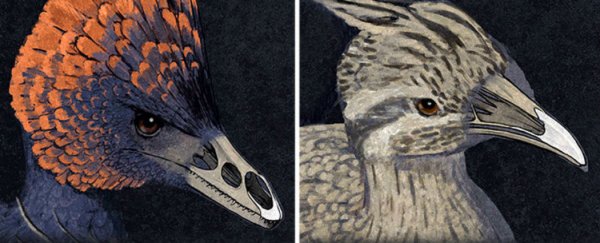In an effort to gain a better understanding of how avian beaks evolved, scientists in the US have altered the DNA of chicken embryos, causing them to grow the broader, more robust snouts of their ancient ancestors. By figuring out the genetic requirements of transitioning from one type of snout to another, the team hopes to explain how one of the most specialised appendages in the animal kingdom came to be.
"The beak is a crucial part of the avian feeding apparatus, and is the component of the avian skeleton that has perhaps diversified most extensively and most radically - consider flamingos, parrots, hawks, pelicans and hummingbirds, among others," one of the team, palaeontologist and developmental biologist, Bhart-Anjan Bhullar from Yale University, said in a press release. "Yet little work has been done on what exactly a beak is, anatomically, and how it got that way either evolutionarily or developmentally."
While the likes of 'traditional' dinosaurs such as T.rex, Triceratops, and the Velociraptor went extinct 65 million years ago due to a colossal impact from an asteroid, so-called avian dinosaurs managed to survive to this very day by evolving into modern birds. The fossil record shows that 150 million years ago, dinosaurs made a very gradual but clear transition into birds as we know them, with the appearance of aerodynamic feathers instead of insular or decorative fluff, wings instead of digits, and beaks instead of muzzles.
Looking at what makes beaks so distinct from snouts - elongated, sharp, pointy-ended - scientists have suggested that they evolved to give the earliest birds better grasping and riffling abilities, in lieu of similar qualities in their hands and feet. "The beaks help make up for the dinosaurs' grasping arms, which evolved into wings, giving them the ability to peck at food such as seeds and bugs," says Charles Choi at LiveScience.
After having spent time analysing and comparing the skeletons and individual bones of modern species of birds, extinct birds, bird-like dinosaurs, and distant reptilian relatives such as alligators and turtles, Bhullar and his team looked for genetic differences across the four groups.
"The researchers focused on two genes that help control the development of the middle of the face," Choi reports. "The activity of these genes differed from that of reptiles early in embryonic development. They developed molecules that suppressed the activity of the proteins that these genes produced, which led to the embryos developing snouts that resembled their ancestral dinosaur state."
By modifying the proteins that are produced by these particular genes - rather than modifying the genes themselves - the team was able to control the growth of the chickens' beaks. Describing their experiment in the journal Evolution, they say that instead of growing regular beaks, the modified chicken embryos developed wide snouts, with a blunt, rounded end, like an Archaeopteryx's, except with no teeth.
While they decided not to let them hatch, Bhullar told LiveScience that they were healthy enough to survive if they did. "They actually probably wouldn't have done that badly if they did hatch," said Bhullar. "Mostly, though, we were interested in the evolution of the beak, and not in hatching a 'dino-chicken' just for the sake of it."
As Choi points out at LiveScience, the results are intriguing because these aren't genetically modified chickens - they've just had certain proteins altered in order to completely change the way their skulls developed. And if such a relatively small change in the lab can have a significant effect on the physicality of these unborn organisms, it hints at the small series of evolutionary changes that could have occurred hundreds of millions of years ago to facilitate the transition from dinosaurs to bird-like dinosaurs, and then from bird-like dinosaurs to birds as we know them today.
Who knows, maybe one day science will get crazy - and ethically ambiguous - enough to let 'dino-chicks' out of their eggs.
